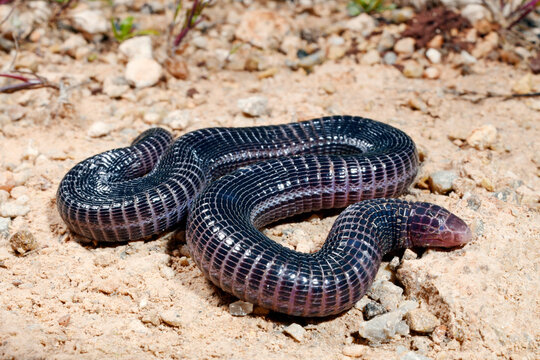REPTILES
.Reptiles are fascinating creatures! They're a diverse group of animals that includes snakes, lizards, turtles, crocodilians, and tuatara. One of the defining features of reptiles is their scaly skin, which helps prevent water loss. Most reptiles lay eggs, although some, like certain species of snakes and lizards, give birth to live young.
.they are ectothermic, meaning they depend on outer wellsprings of intensity to manage their internal heat level. To this end you frequently see them lolling in the sun to heat up.Their dependence on external heat sources makes them more active in warmer climates, which is why they're commonly found in tropical and subtropical regions.
.From the stealthy and venomous snakes to the majestic and ancient turtles, reptiles have evolved divers adaptations that have allowed them to thrive in various environments around the world. They play crucialr oles in ecosystems as both predators and prey, contributing to the balance of nature.
let's dive deeper into the world of reptiles!
1. Classification: Reptiles belong to the class Reptilia, which is one of the main groups of vertebrates. They are further divided into four main orders: Squamata (lizards and snakes), Testudines (turtles and tortoises), Crocodilia (crocodiles, alligators, caimans, and gharials), and Rhynchocephalia (tuatara).
2. Habitats: Reptiles inhabit a wide range of habitats, including deserts, forests, grasslands, wetlands, and even oceans. Each species has adapted to its specific environment, such as the ability of desert-dwelling reptiles to conserve water or aquatic reptiles like sea turtles that are adapted for life in the ocean.
3. Diet: Reptiles have diverse diets depending on their species and habitat. Some are carnivorous, feeding primarily on insects, rodents, birds, or other reptiles. Others are herbivorous, consuming vegetation such as leaves, fruits, and flowers. There are also omnivorous reptiles that eat a combination of plant and animal matter.
4. Reproduction: Most reptiles reproduce sexually, with males fertilizing females internally. Many reptiles lay eggs, which they may bury in nests or leave in protected areas. Be that as it may, a few reptiles, for example, certain types of snakes and reptiles, bring forth live youthful, an interaction known as viviparity.
5. Adaptations: Reptiles have evolved numerous adaptations to survive in their environments. For example, snakes have specialized jaws and flexible bodies for swallowing large prey, while chameleons have unique color-changing abilities for camouflage and communication. Crocodilians have powerful jaws and strong muscles for capturing prey in aquatic environments.
6. Conservation: Many reptile species are facing threats due to habitat destruction, pollution, climate change, and illegal trade. Conservation efforts are underway to protect endangered reptiles and their habitats through measures such as habitat preservation, captive breeding programs, and public education.
Overall, reptiles are an incredibly diverse and ecologically important group of animals that have fascinated humans for centuries. Their unique characteristics and adaptations continue to inspire scientific research and conservation efforts worldwide.
.There are many types of reptiles, each with its own unique characteristics and adaptations. Here are some of the main groups:
1.Snakes: Snakes are elongated, legless reptiles belonging to the order Squamata. They are known for their flexible bodies, forked tongues used for sensing their environment, and a wide variety of hunting techniques. Snakes can be found in almost every habitat worldwide, from deserts to rainforests.
2. Lizards: Lizards are another group within the order Squamata, but unlike snakes, they typically have legs (though some, like the legless skinks, have reduced or absent limbs). Lizards come in a vast array of sizes, colors, and habitats. They are known for their ability to regenerate lost tails, their often elaborate displays during mating rituals, and their diverse diets.
3. Turtles and Tortoises: Turtles and tortoises belong to the order Testudines. They are characterized by their bony or cartilaginous shell, which provides protection. Turtles are aquatic or semi-aquatic, with webbed feet or flippers for swimming, while tortoises are terrestrial, with sturdy, elephantine limbs for walking on land.
4. Crocodilians: Crocodilians are large, aquatic reptiles belonging to the order Crocodilia.This gathering incorporates crocodiles, gators, caimans, and gharials.. They are known for their powerful jaws, which they use to catch prey, and their ability to regulate body temperature by basking in the sun.
5. Tuatara: Tuatara are unique reptiles native to New Zealand and are the sole surviving members of the order Rhynchocephalia. Despite their lizard-like appearance, they have several distinct features, including a specialized third eye on the top of their head and a unique tooth structure.
6. Amphisbaenians: Amphisbaenians, also known as worm lizards, are burrowing reptiles that resemble earthworms. They belong to the order Squamata but are adapted for a subterranean lifestyle. They have elongated bodies with reduced or absent limbs and are found in tropical and subtropical regions worldwide.
These are just a few examples of the diverse types of reptiles found around the world, each with its own fascinating adaptations and ecological roles.
IF YOU LIKE ANIME REALATED CONTENT VIST MY



No comments:
Post a Comment